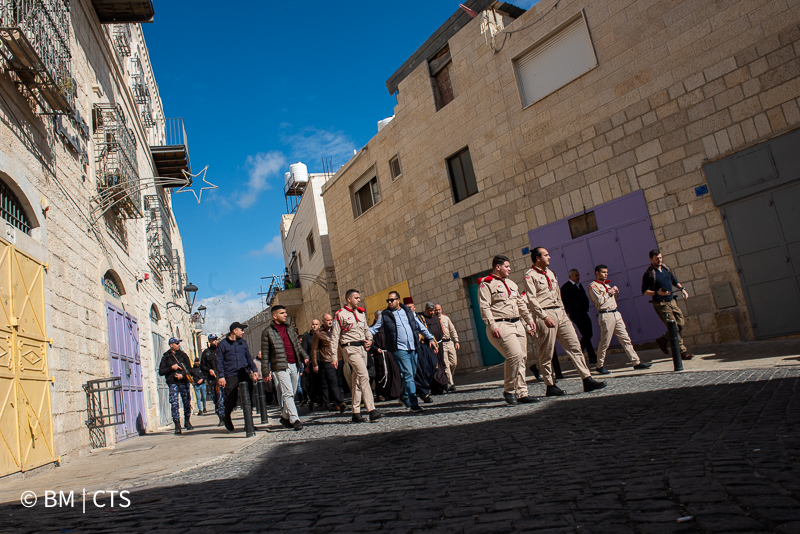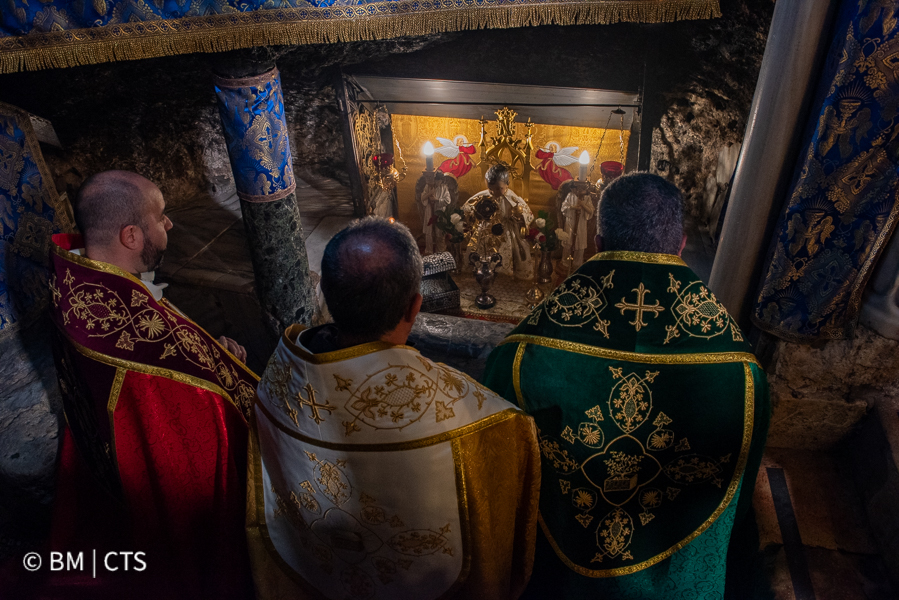The Epiphany marks the end of the Christmas celebrations in Bethlehem. If the festivities were celebrated in a minor tone in all the exterior manifestations, prayer, especially prayer for peace, was intensified. On 6 January, the day of the Epiphany and the 60th anniversary of the visit by Pope St Paul VI to Bethlehem, the Custos of the Holy Land, fra Francesco Patton, took as his own the words that Pope Montini pronounced on that occasion. Fra Patton thus renewed “our urgent appeal for world peace to Heads of State and all those who are responsible for the peoples of the world.”
The Custos arrived in Bethlehem, the city of the “Prince of Peace” in the morning of 5 January for the solemn entrance. He was greeted by empty streets, without pilgrims or the local faithful, who deserted the appointments “in the open”, privileging their presence at the religious functions. “Unfortunately this year the pilgrims are not here, but the heart of the whole world is in Bethlehem for the Epiphany,” fra Patton said in is greeting after the entrance.

“Seeing that that Magi, i.e. the pilgrims, are not in Bethlehem, the invitation to all those who want to come in pilgrimage is to make an effort and come anyway. The holy places are open for visits and people need the encounter with the pilgrims, including to overcome the temptation to leave this land. We pray, hope and insist that the pilgrims return, so that there is peace.”
On the day of the Epiphany, the Custos presided over the Solemn Mass in the Latin church of St Catherine wearing the chasuble that Pope Paul VI had used in the celebration in the Grotto of the Nativity 60 years ago. The same chalice was also on the altar. The Pope was the first successor of the apostle Peter to return to the Holy Land as a pilgrim.

In his homily the Custos invited the faithful to take in their own lives the same attitude as the Magi, who “bow down in adoration and offer gold, incense and myrrh. These are two gestures that teach us how our relationship should be with God who appears in the child Jesus. Let us put Jesus Christ in the centre of our life, like our God, like our king, like He who shares our life, as the Prince of Peace, who inspires choices of peace, words of peace, attitudes and feelings of peace.”
While the Catholics were celebrating the liturgies of the Epiphany, in the Orthodox Patriarchs were arriving in Manger Square and in the Grotto of the Nativity , on the day which for them is Christmas Eve (the Churches that follow the Julian calendar celebrate Christmas on 7 January, together with the Epiphany). The Custos of the Holy Land was able to greet the Greek Orthodox Patriarch Theophilos III, just before he entered the Basilica of the Nativity.

In the afternoon of 6 January, the Second Vespers of the Epiphany highlighted the figures of the Magi. Three Franciscan friars brought these wise men “from the Orient” to life, bringing gold, incense and myrrh as gifts for the Child Jesus. Fra Luis Enrique Segovia, guardian of the Franciscan convent of Bethlehem, brought the gold rose, given by Paul VI to the Basilica of the Nativity. Fra Alberto J. Pari, secretary of the Custody of the Holy Land brought incense, which filled the censer used to incense the holy places of the appearance of Jesus, in the Grotto of the Nativity. Fra Jad Sara, head of the infirmary of the friars, brought myrrh, the perfume oil that was once used for burial.

After the adoration in the Grotto, the friars in procession, with the Magi and the Custos with the statue of the Child Jesus on the throne went round the cloister of St Catherine’s church three times, distributing grains of incense and drops of myrrh to the faithful, before the final blessing with the statue of the Child Jesus.
Marinella Bandini
